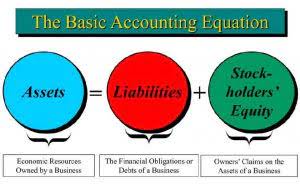Content

Here’s an example of an AR aging report with collection probabilities that add up to a total bad debt reserve. Bad debt expense is an accounting entry that lists the dollar amount of receivables your company does not expect to collect. Given the uncertain nature of consumers, every business ought to be prepared for a bad debt expense. The chances are high that some customers will not pay for the products, creating a bad debt.

This formula gives you the percentage of bad debt, which you can also think of as the percentage of sales estimated to be uncollectable. To create a journal entry, debit the bad debt expense and credit the accounts receivable balance for the same amount. You would record bad debt expenses in a bad debt expense account as soon as you realize a debt is uncollectible. Recording bad debts is an important step in business bookkeeping and accounting. It’ll help keep your books balanced and give you realistic insight into your company’s accounts, allowing you to make better financial decisions.
Percentage of Receivables
The reserve is the amount set aside to cover potential future bad debt expenses. If you do not agree to pay this price, your company is likely to suffer significant losses and may go bankrupt. If you follow accrual accounting standards, you just have to report bad debt expense. Therefore, https://www.bookstime.com/articles/what-exactly-does-a-bookkeeper-do the business would credit accounts receivable of $10,000 and debit bad debt expense of $10,000. If the customer is able to pay a partial amount of the balance (say $5,000), it will debit cash of $5,000, debit bad debt expense of $5,000, and credit accounts receivable of $10,000.

Many businesses have incurred significant losses as a result of this period. Bad debt expense is the way businesses account for a receivable account that will not be paid. Bad debt arises when a customer either cannot pay because of financial difficulties or chooses not bad debt expense calculator to pay due to a disagreement over the product or service they were sold. For more information on nonbusiness bad debts, refer to Publication 550, Investment Income and Expenses. For more information on business bad debts, refer to Publication 535, Business Expenses.
Accounts Receivable Aging Method
A high bad debt ratio can indicate that a company’s credit and collections policies are too lax, or it may suggest that the company is having trouble collecting customer payments. With B2B businesses relying on the credit model to bring in more clients and sales volume, bad debt has become an inevitable part of operations. When a company makes a credit sale, it books a credit to revenue and a debit to an account receivable. The problem with this accounts receivable balance is there is no guarantee the company will collect the payment.
As such, it’s an expense you should track and record to ensure you’re maintaining an accurate picture of your business’s financial health and not overestimating your revenue. Usually, a business won’t call an outstanding invoice or loan a bad debt until it meets a certain threshold. For example, if you’ve tried to recover the debt and the client doesn’t respond to your communication or refuses to pay, you know you have a bad debt expense on your hands. For example, at the end of the accounting period, your business has $50,000 in accounts receivable. In addition, it’s important to note the change in the allowance from one year to the next.
What Is Bad Debt Expense?
If you don’t have a lot of bad debts, you’ll probably write them off on a case-by-case basis, once it becomes clear that a customer can’t or won’t pay. Like any other expense account, you can find your bad debt expenses in your general ledger. Not only does this help forge better customer relationships, but it also minimizes bad debt expense by reducing the likelihood of receivables becoming uncollectible. With collaborative AR, you can ease communication with not only customers but also members of your sales team. Giving Sales access to customer payment history and cash flow data also helps them make more informed credit decisions.
The term bad debt refers to these outstanding bills that the business considers to be non-collectible after making multiple attempts at collection. Because no significant period of time has passed since the sale, a company does not know which exact accounts receivable will be paid and which will default. So, an allowance for doubtful accounts is established based on an anticipated, estimated figure.
Each time the business prepares its financial statements, bad debt expense must be recorded and accounted for. Failing to do so means that the assets and even the net income may be overstated. The aggregate balance in the allowance for doubtful accounts after these two periods is $5,400. The aging method groups all outstanding accounts receivable by age, and specific percentages are applied to each group. For example, a company has $70,000 of accounts receivable less than 30 days outstanding and $30,000 of accounts receivable more than 30 days outstanding.
If bad debt protection does not fit a company’s needs, there are alternatives. The best alternative to bad debt protection is trade credit insurance, which provides coverage for customer nonpayment in a wide range of circumstances. In this case, the company’s bad debt expense represents 5% of its accounts receivable. For a discussion of what constitutes a valid debt, refer to Publication 550, Investment Income and Expenses and Publication 535, Business Expenses. Generally, to deduct a bad debt, you must have previously included the amount in your income or loaned out your cash. If you’re a cash method taxpayer (most individuals are), you generally can’t take a bad debt deduction for unpaid salaries, wages, rents, fees, interests, dividends, and similar items.
You must compare the company to other industry participants to determine true efficiency. Higher ratios are preferred because they indicate that the corporation can maintain cash on hand for longer. However, a business must strike a balance between good credit and avoiding late payment fines. When launching a new product to the market or anticipating a busy sales period, companies typically allow stocks to build up. If you don’t expect a noticeable boost in demand, however, the increase may result in unsold goods collecting dust in the stockroom. Consider Walmart, the world’s largest retailer, which is famed for its ultra-efficient operations and cutting-edge supply chain system, which keeps inventories to a bare minimum.
